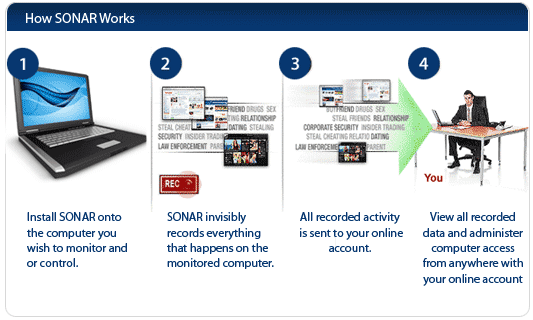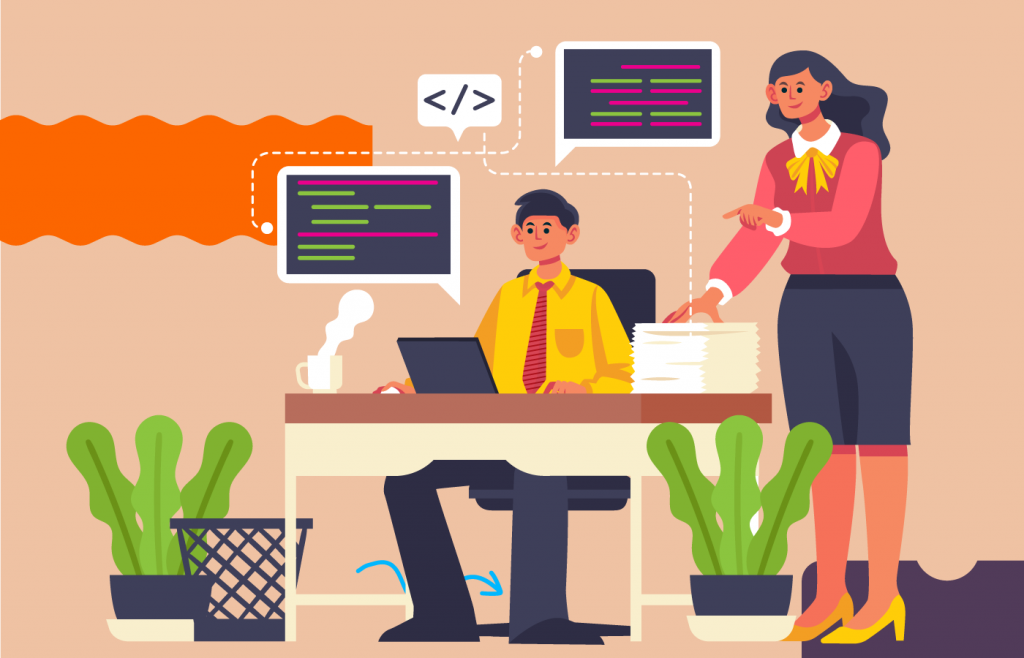The software for monitoring employees is a type used by businesses to monitor and track employees' activities. It allows employers the ability to collect data about a range of factors associated with employee behavior. This can include internet use as well as application usage, keystrokes and screenshots. The main goal of software for monitoring employees is to boost productivity, guarantee the compliance of policies, safeguard sensitive information, and address concerns about security. When selecting an employee monitoring software, there are a variety of aspects to take into consideration. Here are some important points to consider: Features- Determine which features you need based on the needs of your business. Some of the most common features include activity monitoring and blocking websites. Other features include keystroke logging, tracking applications including email monitoring, and reports generation. Prioritize features that are aligned to your monitoring objectives.
Privacy and Compliance- Make sure that the software adheres to ethical and legal guidelines for employee monitoring. Be sure to be familiar with any applicable laws or laws, such as privacy and data protection laws. It is recommended to look for software that is clear and customizable features that protect the privacy rights of employees.
User-Friendliness: Consider the program's accessibility and user-friendliness. Time will be saved and the process will be streamlined by having a straightforward interface and setup procedure. It is recommended to look for dashboards that are customizable and reporting tools which allow users to quickly analyze the data you have that is collected.
Integration and compatibility - Verify that the software is integrated seamlessly with your current infrastructure and systems that you currently use. This includes operating systems as well as email clients. Compatibility allows for seamless monitoring of your systems, without disrupting normal activities.
Data Security- Review the security measures implemented by software to ensure the security of the data you collect. Security protocols, encryption, secure storage of data, and access control are important. Check that the provider of software has a good security record and reliable data protection practices.
Scalability - Think about the software's ability to grow with your business. Select software that is easily scalable to meet your changing needs if you plan on expanding your workforce or opening new offices.
Analytical Reporting: Check the software's reporting and analytics capabilities. Consider features that can give you a comprehensive view of the performance of employees, their timing allocation, and trends. Customized reports and analytics can assist you in making educated decisions and determine areas of improvement.
Customer Support - Assess the quality of the customer service provided by the vendor. Their availability, their level of support, and their response time are all important factors. If you've got a good customer service staff They will be able to provide quick assistance when problems occur.
Cost- Take a look at the pricing model for the software, whether it is a one-time payment, subscription-based, or usage-based. Understanding the pricing structure is crucial because it will include any extra costs for updates, support or other features. Make sure you balance the cost of your product in relation to its value and features.
Transparency and Communication among employees - Establish transparent communication with your employees about the deployment and use of monitoring software. Explain the scope and purpose of monitoring in a transparent manner. Be sure they are aware of their privacy rights and address any questions.
When you take these aspects into consideration by weighing these factors, you can make an informed choice and select a monitoring system that meets the needs of your business while preserving employee privacy and the law. See the top employee monitoring software for more advice.

What Are The Functions Of Employee Monitoring Software And How Can They Differ?
Software for employee monitoring offers many features that can be used to analyze and track employee behaviour. There are a variety of features available in monitoring solutions for employees. The features are different based on the software solution, but there are some options you can find. This feature provides an overview of the time employees spend at work.
Keystroke Logging Keystroke logging records every single keystroke entered by employees. It helps uncover productivity bottlenecks, spot illegal activities, and collect evidence for investigations if needed.
Screenshots and screen recording Some software records employee screens in real time, or takes screenshots at regular intervals. This feature can help monitor productivity, ensure that compliance is maintained, and help to resolve issues.
Internet Usage Tracking This function monitors employees' online activities, such as the websites they visit, their search queries downloads, etc. It lets you identify other internet activities that are not related to work, security risks or violation of policies.
This feature tracks all apps that employees use at work. It gives insight into the applications are used by employees the most often and helps to identify any inappropriate or illegal use.
Email Monitoring - Email monitoring allows employers the ability to track employee email, which includes sent and receive messages, attachments and email content. It helps to ensure the compliance of corporate policies, prevent leakage of data and look into any suspicious activity.
File and Document tracking- This feature monitors access to, changes to documents and files, as well as transfer. It secures sensitive information as well as monitors collaboration between documents and ensures compliance with the data security guidelines.
Remote Monitoring lets employers supervise employees who work remotely or in different locations. Employers are able to monitor their activity and ensure that they work efficiently regardless of where they are.
Productivity Analysis Software used for monitoring employees often includes features for productivity analysis that provide information on the allocation of time and work patterns. These analyses are used to improve workflow and pinpoint areas of improvement.
Analytics and Reporting- Robust features for analytics and reporting create detailed reports using the data that is collected. These reports provide valuable insights into employee productivity as well as time management and resource allocation.
Compliance and Policy Management - Software solutions can be configured to comply with regulations, company policies, and various industry standards. They allow employers to establish guidelines for acceptable use of computers and internet access.
Alerts/Notifications: Alerts/notifications alert managers or employers when certain activities or events occur. They may alert you to excessive internet usage and attempts to gain access to restricted websites, or unusual behavior.
It is important to keep in mind that the availability and functionality of these features can differ between various employee monitoring software options. When selecting a software, look for features that match your monitoring needs and are compliant to local ethics and legal guidelines. See the most popular time tracking monitoring services for more examples.

What Software For Employee Surveillance Conform To The Compliance And Privacy Laws?
Compliance and privacy laws are essential to employees monitoring software. Software for monitoring employees must conform to certain privacy and compliance laws. While they may differ according to the jurisdiction, some of them are common. Monitoring software for employees typically includes tools that allow employers to clearly communicate their monitoring policy to employees. It could be necessary to provide written notices or obtain consent through consent forms. Or, an employee manual which outlines the policies for monitoring can be used as well.
Transparent Monitoring Policies - Employee monitoring software helps promote transparency by making sure that employees are aware of specific types of data being collected, the purposes of monitoring, and the extent of monitoring activities. Clear and comprehensive policies aid employees in understanding the limits of monitoring and their rights in relation to privacy.
Data Minimization Principles- Employee monitoring software frequently uses methods to reduce data in order to comply with privacy legislation. Data minimization is the process of ensuring that only vital data is gathered, kept and not used. By restricting data collection to that which is necessary for monitoring, the software reduces the risk of privacy and increases compliance.
Certain software for employee surveillance anonymizes, or aggregates, data to protect the privacy of employees. Anonymization erases personally identifiable information (PII) from collected data and makes it difficult to associate data with specific people. The aggregated data is a mix of several employees' information to gather insights at the aggregate level, but without identifying particular individuals.
Secure Data Storage & Encryption - Software for monitoring employees puts a premium in the protection of the data collected. Data is protected with secure storage practices for data and encryption techniques. This includes protecting data while traveling and also in stationary.
Access Controls and Restricted Permissions To ensure compliance, employee monitoring software usually offers granular access control and permissions. This enables employers to restrict the number of authorized users that are able to access the monitoring data such as HR staff or designated administrators.
Employee Rights and Remedies - Adherence to privacy and compliance laws means respecting the rights of employees. Monitoring software for employees typically includes tools that allow employees to access and correct their own monitoring data and also make complaints. It allows employees to assert their rights and pursue remedies for privacy breaches.
Compliance with Data Protection Regulations – The employee monitoring software has been designed to conform with relevant laws governing data protection like the General Data Protection Regulations in Europe or the California Consumer Privacy Acts in America. Implementing measures to safeguard personal information, honoring data subject rights and ensuring that the processing is legal of data.
It's important to note that although employee monitoring software may aid in compliance efforts, businesses should also seek legal advice and keep up-to-date with relevant laws and regulations in their jurisdiction. Compliance with compliance and privacy laws requires a comprehensive approach that extends beyond the software. This means explicit policies, training for employees and ongoing monitoring of compliance. Check out the top employee monitoring services for blog info.
